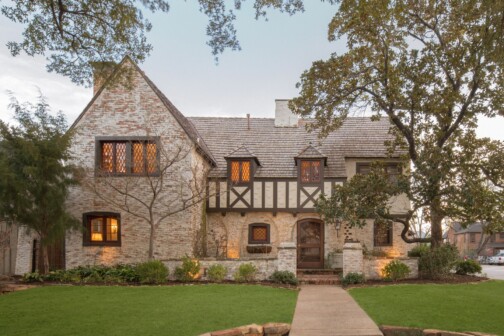
Tyler is not, as you may have heard, a world famous wine making center. Nor is it renowned for its vineyards. However, quietly and for over a decade one winery has been working assiduously to change that impression: Kiepersol Estates. The winery makes all of its wine from grapes grown on the 66 acres surrounding the wine making facility and tasting room. There are 14 varietals and these are viniferous varieties, the species of vine from which virtually all serious wine is made.
During a recent stay at the winery’s’ B&B, I took a grand tour of the whole operation. Jump for the details.
You see the seriousness extend from the viticulture to the winemaking as well. In the winery is a fully equipped laboratory and on staff is a trained laboratory operator. Most red wines are aged in oak barrels (either American or French). At nearly $1,000 per French oak barrel and $400 for the American equivalent, the investment is huge.
Pierre de Wet founded Kiepersol and planted the first vines in 1998 but he has now passed it on to his two daughters. Marnelle de Wet Durrett handles wine making and Velmay de Wet handles marketing and operations. The vinifera vines they grow are:
White (French and Italian origin): Sauvignon Blanc, Semillon, Viognier, Chardonnay, Pinot Grigio;
Red (French origin): Cabernet Sauvignon, Cabernet Franc, Merlot, Malbec, Syrah;
Red (Spanish origin):, Monastrell (aka Mourvedre), Tempranillo;
Red (Italian Origin): Sangiovese;
Red (Other Origin): Zinfandel;

Plans are afoot to expand the lineup still further as Pierre de Wet admits the winery is in an experimentation phase with what grapes grow best in the Tyler, Texas climate and terroir. So far, he thinks that Syrah performs best.
You see that Kiepersol is a pathfinder when you look at the Texas winery map. The Tyler area is not a part of Texas characterized by a large concentration of wineries. Most in the area make fruit wines (literally, wines made of fruit, such as peach wine, etc.). Pierre de Wet’s background in farming is what explains Kiepersol’s success with vinifera grapes, and in that lies at least two lessons for other Texas wineries. First, to those who whine that there are no Texas grapes (and import surplus from California): stop whining. If Kiepersol can grow grapes, and have them productive in the second year, so can others. Second, those who say that vinifera grapes cannot be grown in Texas need better agricultural expertise. Kiepersol, and a select group of growers out in West Texas, show that it can be done.
One anomaly. These bottles all say “Vinted and Bottled by Kiepersol Estates Winery”. The phrase ‘Vinted and Bottled..” should make you run a mile. It is a very low-level designation. Under federal Law the wine could have been made by another winery and just stored at the premises of the winery on the label. The most stringent designation is “Estate Bottled”, meaning the winery on the label made the wine and owned the vineyards that were the source of the grapes. Kiepersol is doing exactly that. Future bottlings will reflect this.
Ultimately, all of the viticulturalist and winemaker effort comes down to what is in the bottle. We had a tasting of the currently available wines at the Kiepersol cellar and came away with some opinions. Here are some highlights:
2010 Kiepersol Estate Winery Viognier, Texas. Medium yellow color. Wine gums and lemon on the nose. Green apples and lemons in the mouth. A precise and carefully selected fruit-acid balance mean this wine will not get heavy or tiring. Could do with a little more fragrance in the nose. We tried a second bottle with Malaysian Chicken Curry with Potato a week later and its acidity cut through the coconut milk to form an impressive match.
2009 Kiepersol Estate Semillon, Texas. Good acid. Good fruit-acid balance. A little metallic in the nose. Guava and mango in the mouth.
N/V Kiepersol Estate Bridge Mengsel, Texas. A blend of the Sangiovese, Tempranillo, Syrah, Merlot and Malbec from the estate. A lively blend that exhibits the Tempranillo for sure. Pierre laments that there is (apparently) little demand for a single varietal Tempranillo. I think that he should keep producing a separate bottling as Tempranillo is emerging as the State’s go-to red.
2007 Kiepersol Estate Winery Cabernet Sauvignon, Texas. Characteristic Texas opacity. Nose of dark fruit. The mouth feel has a backbone of tannin and the wine exhibits that characteristic Texas Cabernet character of a slightly burned taste of stone fruit. Also raspberry jam. This wine is loosely structured which may reflect the rain that hit the vineyards heavily that year. Kiepersol evaporated 1/2 litre per month from each 59 gallon barrel during aging to raise the intensity. A second bottle, tried a week later with Thai Crying Tiger Beef with Sticky Rice and then with Lamb Curry from the same menu was a strongly recommended match. Drink this wine now or in the next year. (Gold Medal at 2010 American Wine Society International Competition).






